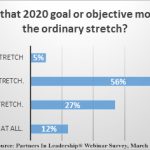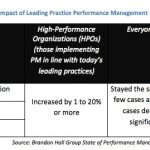Adult Learning: What Do We Know for Sure?
If it's your job to train adults--whether they want to be trained or not--adult-learning theory can give you insight and practical help.
Win the War for Talent: Getting Performance Management Right
Performance management needs clarity of purpose, the courage to follow through, the elegance and user-friendliness of simplicity, and the basics of engaged managers.
Minimizing Health Complications at Miami Children’s Hospital
Miami Children’s Hospital trained more than 800 nurses on how to properly care for Peripheral Intravenous (PIV) patients—PIV therapy is the less invasive treatment of choice when drug therapy for antibiotics is required—to help avoid serious health complications.
Quick, Targeted Idea Training with Significant Strategic Impact
Short targeted training sessions called “idea activators” aim to get people to look at aspects of their work from new perspectives that highlight problems and opportunities they otherwise would not see.
Got 2020 Vision?
Does your company have a 2020 goal, a clear vision for what you’d like to achieve over the next five years? If so, is it just an idea or do people feel accountable for making it happen?
Coaching, Leader Engagement Are Key to Improved Performance Management
Even though there is a lot of talk about fresh performance management practices, Brandon Hall Group’s recent study reveals that few organizations have made any significant enhancements to the traditional “rank-and-stack” approach.
The Power of Pretty
Your appearance plays a part in your career. While we can’t Photoshop real life, we can take what we were born with and play up our aesthetic strengths.
McCarthy’s Healthy Best Practice
McCarthy Building Companies, Inc.’s “Build For Life” Wellness approach is built on proactive tenets such as training for both awareness and behavior change, and a mix of both positive and negative reinforcement. Results include a 50 percent reduced health-care spending trend.
Flexibility Is Key to the Future of Higher Education
A direct assessment program awards degrees based on demonstrated learning, rather than seat time in the classroom like the credit hour. As a result, this more flexible approach has the potential to significantly reduce the time and cost of earning a degree.
Management Ethics: Choices You May Need to Make
What do you do when you have entered a position under a director but only respect the title the director has achieved and not the individual and his or her ethics/behaviors?



